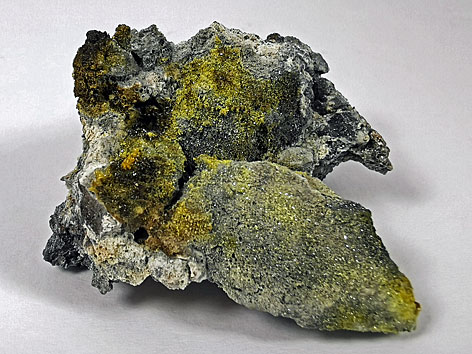
Challacolloit xx
La Fossa Krater, Insel Vulcano, Äolische Inseln, Sizilien, Italien
Stufe: 4,1 x 3,8 cm

Challacolloit xx
Detail der links abgebildeten Stufe
Bildbreite: 2,5 mm
|
Challacolloit |
|
|
Formel: |
KPb2Cl5 (3.AA.55) |
|
Ausbildung: |
monoklines Kristallsystem; farblos, weiß, gelb, prismatische Kristalle, dünne Krusten und botryoidale Aggregate |
|
Entdeckung: |
2003 von Arturo Molina Donoso, Iquique, Chile, auf den Halden der Challacollo Mine entdeckt; IMA 2004-028; 2005 - Schlüter & Pohl & Britvin; benannt nach der Typlokalität Challacollo in Chile |
|
Typlokalität: |
Chile, Region Tarapacá (I. Region), Provinz Iquique, Challacollo, Lolon Mine (Challacollo Mine) |
|
Seltenheit: |
höchst selten (Mineralienatlas: 8 / Mindat: 10 Lokalitäten; 2022) |
|
Challacolloit xx La Fossa Krater, Insel Vulcano, Äolische Inseln, Sizilien, Italien Stufe: 4,1 x 3,8 cm
|
Challacolloit xx Detail der links abgebildeten Stufe Bildbreite: 2,5 mm
|
Quellen: Sammlung und Fotos Matthias Kahl; allg. Mineralbeschreibung nach Mineralienatlas.de, Mindat.org, Handbook of Mineralogy, DeWikipedia und/oder Lapis-Mineralienmagazin
© copyright Matthias Kahl